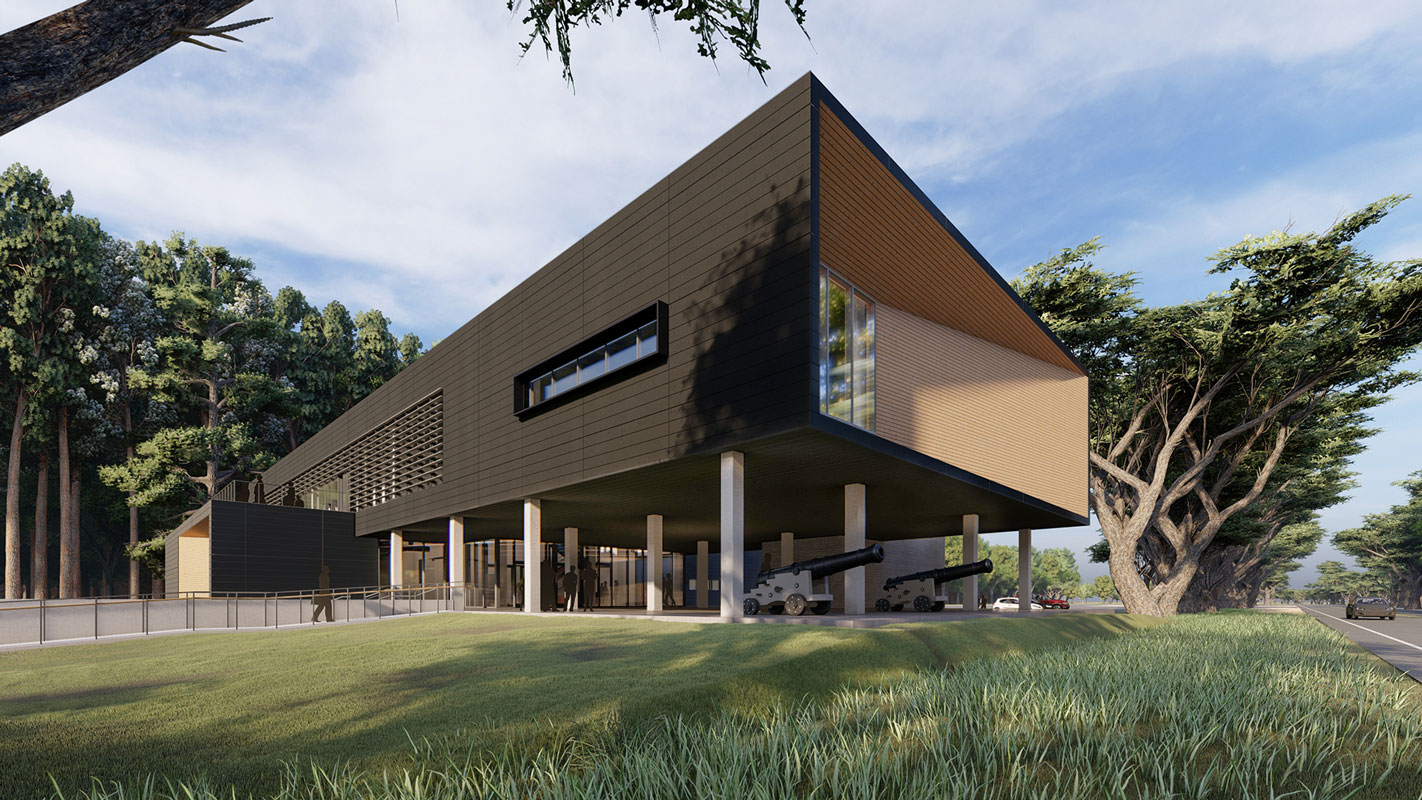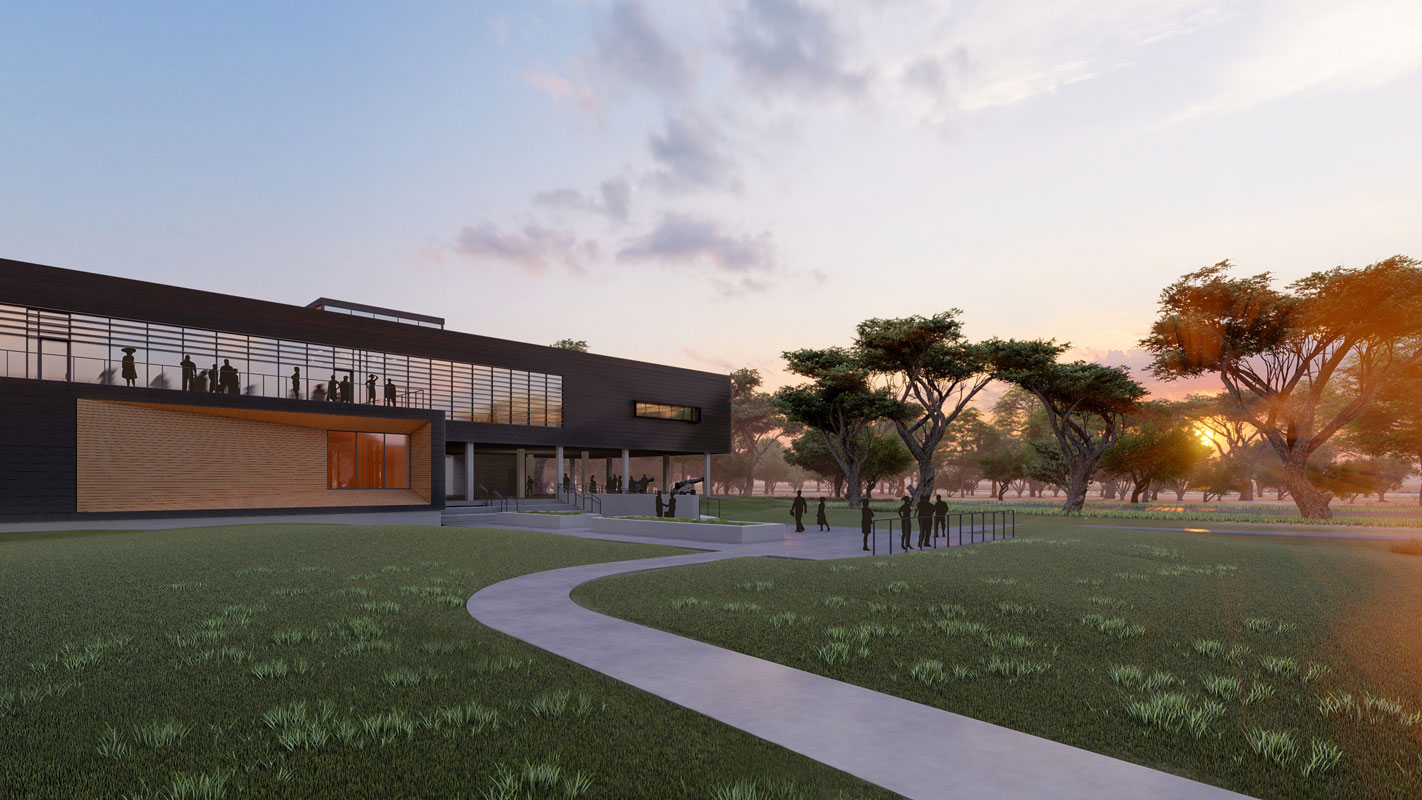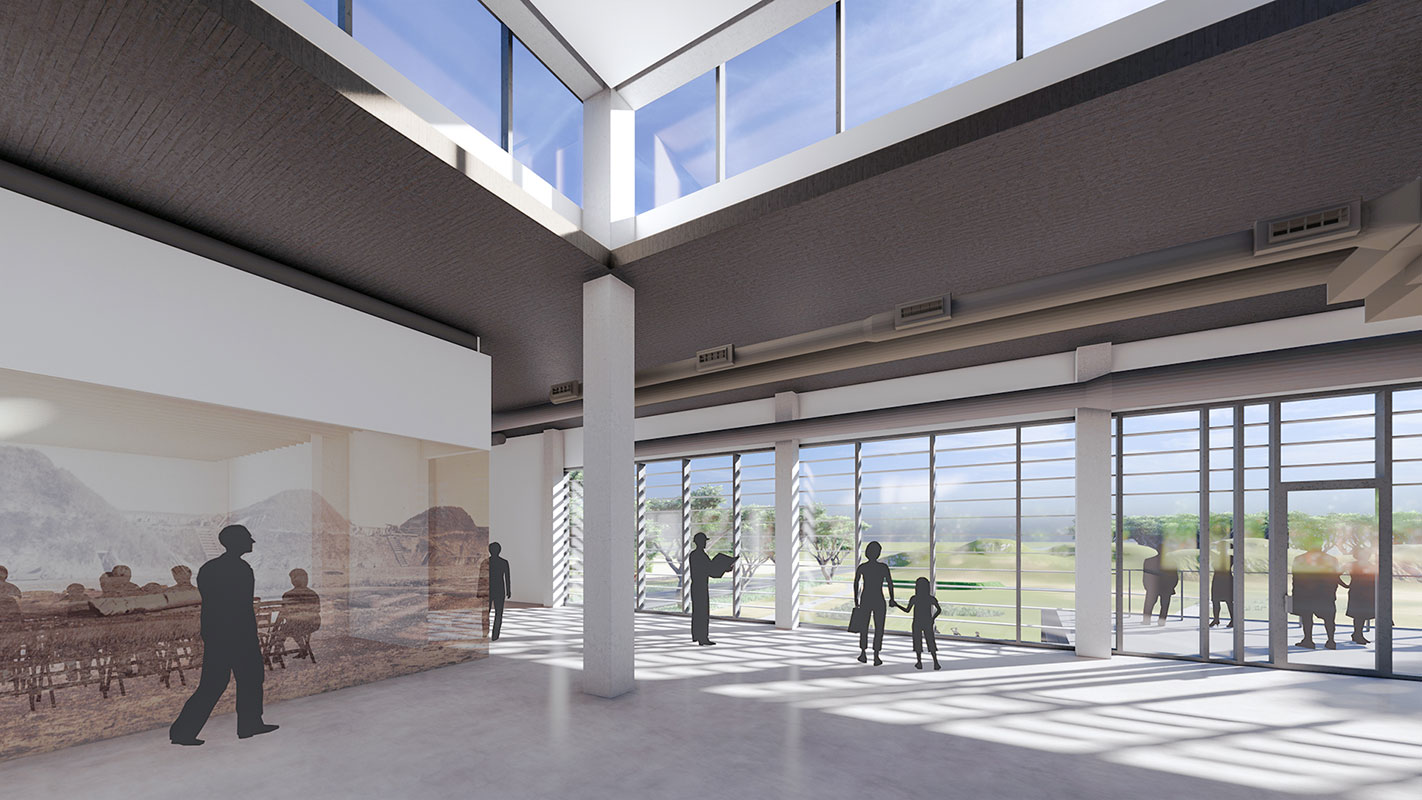Merging history with strong modern design, the new visitors center at Fort Fisher State Park tells a rich story through its upgraded, interactive 22,219 square foot layout. The design of the new, two-story facility responds to the need for more space and amenities for both staff and visitors. It encompasses offices and workspaces, permanent and rotating exhibits, a gift shop, orientation space, multipurpose space, catering kitchen, and multiple viewing and seating areas for visitors. The project also includes development of a new underwater archaeology building.
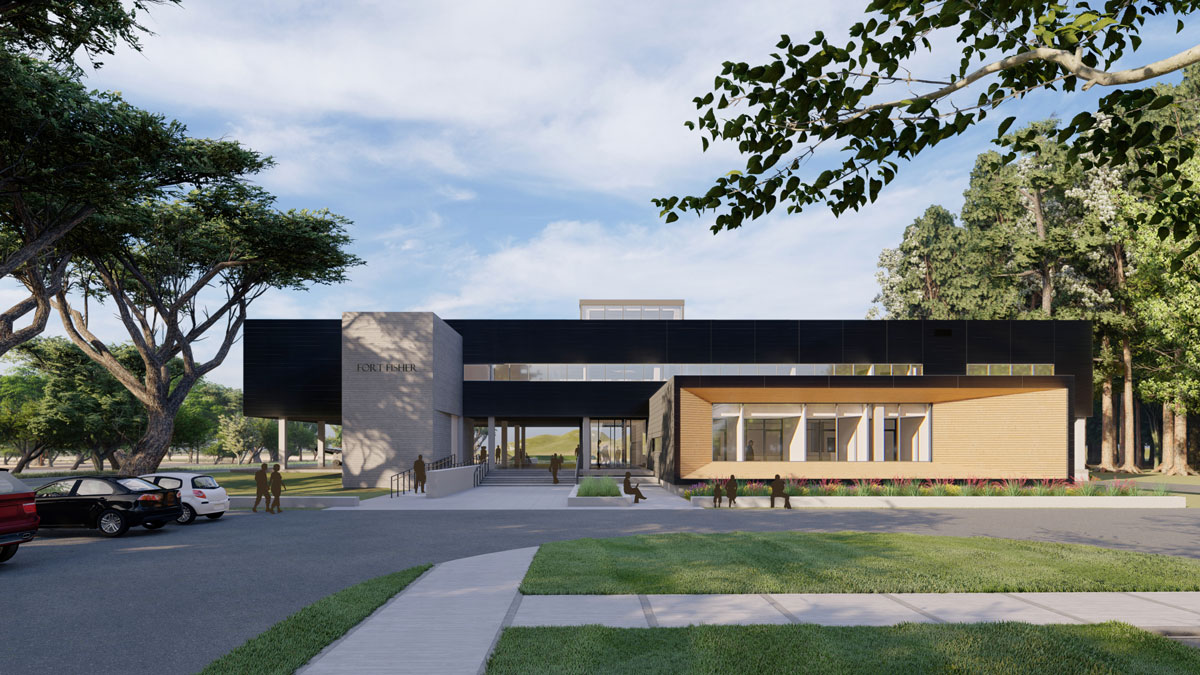
Fort Fisher History: Fort Fisher was built during the Civil War to protect the mouth of the Cape Fear River and serve as a port point of entry for blockade-runners supplying goods to the armies inland. During WWII, a large portion of the fort was cleared by the adjacent military base and subsequently turned into an air strip. Fast forward to the present day, and, while most of the original structure has been diminished by war casualties, erosion, and a shifting coastline, the pieces that remain exist as an important educational resource to the region. In addition to its historical context, Fort Fisher is also an official recreational area within the state park system of North Carolina, boasting six miles of protected shoreline and 288 acres of traversable outdoor space.
A primary objective driving the new design was to create a visitors center that adequately meets the functional requirements of staff and the cultural amenities expected by a contemporary audience. Approaching the facility from the parking lot, visitors are met with a sleek structure, rotated on its axis and lifted on columns, allowing views and passage under the building and beyond onto the fort earthworks. A mixture of dark charcoal grey fiber cement rainscreen and acetylated-treated wood gives the exterior a sharp yet warm materiality, while an extensive curtain wall glazing system along the south side of the building provides generous natural daylighting inside.
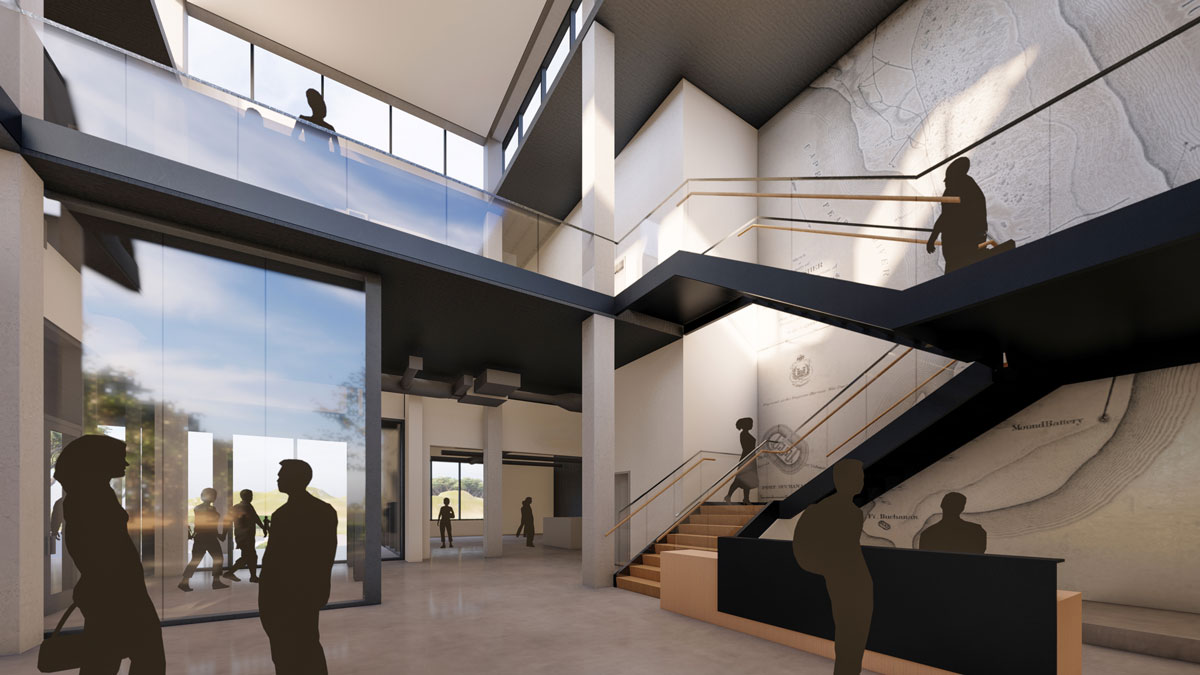
Entering on the ground level, the spacious, window-rich interior includes multiple administrative offices and a monumental staircase leading up to the second level.
Flanking the main entrance are the gift shop and vending options, as well as a covered outdoor area for gathering and scenic views. This outdoor area houses replica cannons and other displayed artifacts and presents a variety of stadium style seats and seat wall planters.
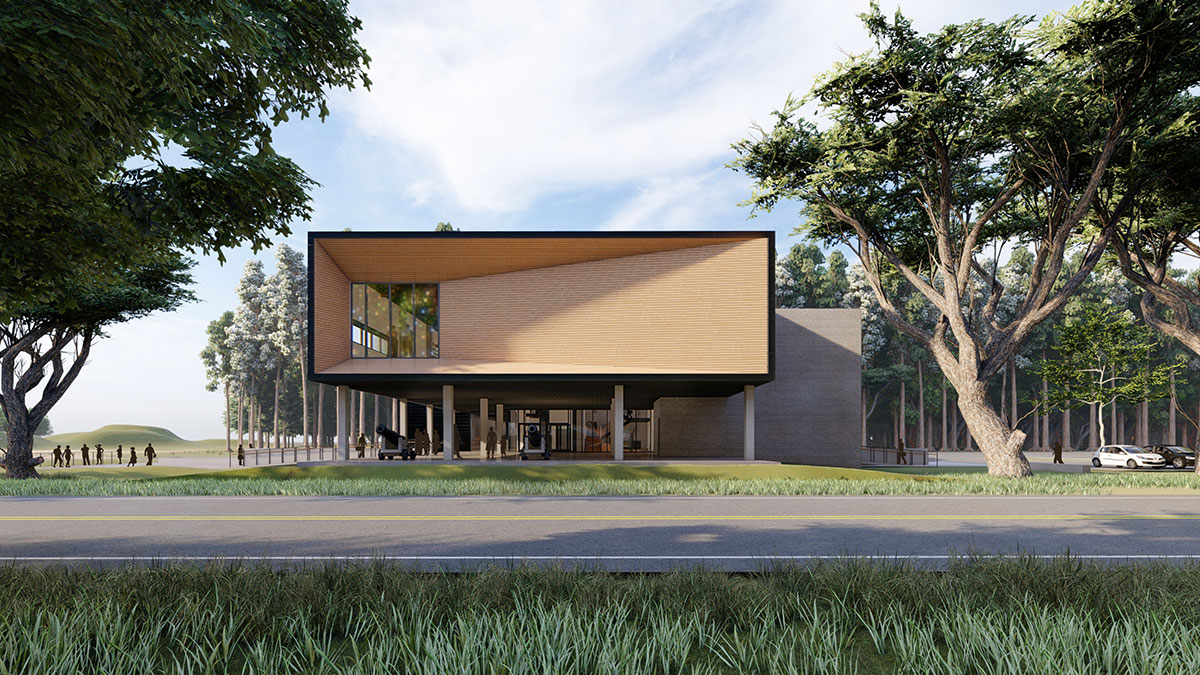 The second level is home to the main exhibits, which will consist of new, interpretive exhibits, permanent installations, and rotating artifacts and relevant displays. An adjacent orientation space will allow for visiting groups to gather before touring the facility, which has convenient access to an outdoor viewing platform overlooking the fortifications below. A large multipurpose room and catering kitchen is available for daily use or for public rental. In addition to the new visitors center building, the Civil War era earthworks that were demolished during the construction of the WWII runway will be reconstructed and will include a sallyport and bombproof. The existing trail system will also be refurbished and extended for recreational use.
The second level is home to the main exhibits, which will consist of new, interpretive exhibits, permanent installations, and rotating artifacts and relevant displays. An adjacent orientation space will allow for visiting groups to gather before touring the facility, which has convenient access to an outdoor viewing platform overlooking the fortifications below. A large multipurpose room and catering kitchen is available for daily use or for public rental. In addition to the new visitors center building, the Civil War era earthworks that were demolished during the construction of the WWII runway will be reconstructed and will include a sallyport and bombproof. The existing trail system will also be refurbished and extended for recreational use.
Addressing Geographic Challenges with Resilient Design
With its location just a couple hundred yards from the Atlantic shoreline, Fort Fisher is situated in a high wind and hurricane impact zone, making it a priority to integrate resilient design principles. Coastal erosion, storm surges, and gradual changes to the shoreline were all contributing elements to the deterioration of the previous visitors center. The new structure will be elevated above the 500-year flood elevation by raising the first-floor slab approximately three feet above the existing grade. Additionally, the roof will be built to withstand up to 160 mph winds.
